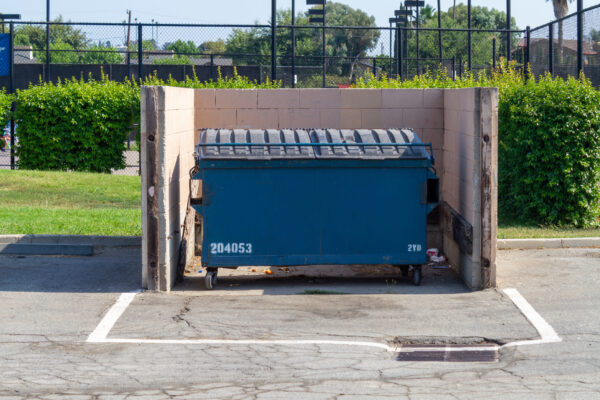In today’s digital age, businesses are increasingly turning to electronic storage to manage their documents. This is due in large part to the convenience, accessibility, and security that digital storage offers.
However, even with the explosion of digital storage options, many organizations still find themselves with paper documents that they no longer need or want to keep. If you find yourself in this situation, the question of what to do with your paper files after they’ve been digitized is an important one.
In this article, we’ll describe document scanning and document disposal, explore some of the options for disposing of paper files, and discuss some of the factors you should consider when making your decision.
What Is Document Scanning?
Document scanning is the process of converting hard copy paper files into a digital, or electronic, format.
You might have boxes of office files, years’ worth of newsprint issues, rolled plan sets of engineering drawings, or maybe even hard-bound oversized books of official records. Whichever is the case, scanning these records and converting them into digital files is what we consider document scanning.
What Is Document Disposal?
Document disposal is the process of destroying your hard copy records, typically after they’ve been digitized.
We say “typically” because in some cases our clients ask us to dispose of various records that they don’t want scanned, but want destroyed. In these cases, the files may be past their retention period or they’re just not needed by our client anymore, and instead of scanning the records they’re instead identified as “destroy only.”
If we had our choice, we’d always prefer to scan the records first, just in case so that they’d have a digital copy as a backup.
But, whichever decision is made, our disposal process includes preparing a BMI Destruction Authorization form which outlines the records to be destroyed, and we won’t proceed with the disposal until our client signs the letter approving the process.
When You Would Consider Document Disposal
If you’re not interested in keeping the hard copy records after scanning them, you want to consider document disposal.
Once you have that digital copy, you can make other copies of it for backup disaster recovery, or you could have it hosted through a web app, so it’s likely not critical to keep the hard copies anymore. If you find that this is the case in your organization, disposal is a simple and effective way to have your documents disposed of as part of the digitization project so that you don’t have to deal with it afterwards.
Document Disposal Methods
The most common disposal methods we see and utilize are listed below:
Trash / Recycling
Simply throwing records away is a simple option but one that’s not used often. First, the records would have to have no sensitive information on them at all, which is rare. Also, we don’t like filling up our bins with projects, so for larger projects this isn’t a good option – this method would be used only with small projects.
An example of using the Trash/Recycling method would be if we scanned a few additional newspaper issues for one of our clients. 1) there’s no sensitive material, and 2) it’s just a few dozen pages. In this case, we’d just toss them into our bins and move on.

Shredding
One of the most popular methods to dispose of paper files is by shredding them. Shredding destroys sensitive information contained in the documents and also breaks the paper down into small pieces that are easier to dispose of safely.
Even if you have non-sensitive records, shredding is a great option because if you’re working with a company like ours, we’re most likely going to already have other projects on the schedule to shred, so you might as well get yours lumped in here, too.
Storage
Although not a “real” disposal method, if you find yourself thinking you must keep the hard copies after you scan them, long-term storage might be an option you’re interested in. You can use the digital files on a normal basis, and at least the hard copies are out of your office.
Considerations For Document Disposal
When deciding which way to dispose of your documents, there are a few factors to consider.
First, and probably the most important, is the sensitivity of the information contained in the documents. If you’re disposing of something with sensitive information, such as criminal records, just tossing these in the trash is not only a bad idea but could be legally punishable. Decide which method suits the security level of the documents first, and then move on to the other factors.

Second, the quantity of documents may sway you one way or another. For instance, if you’re disposing of non-sensitive records such as school course catalogs, and you have a lot of them (100+ bankers’ boxes), this can affect the cost depending on the method you choose. If you go with shredding, you’re looking at a significant increase when compared to trashing/recycling the records.
Lastly, if you’re destroying your documents you want to be sure that you either don’t need these documents anymore or you’ve confirmed that they’ve been accurately captured in digital form. If it’s a small project (say 5 boxes or so) it won’t take long to check, but if you have a larger project, you should be confirming receipt of the scanned records throughout the project so you’re positive that you have a copy before agreeing to disposal.
Next Steps
Reach out to us today! Click the “Get Your Quote” button below, fill out the form, and we’ll quickly reply to you to discuss your project.
Further Reading
Digital Box Scanning
When you’re figuring out which way you want to scan your paper records to an electronic format, consider the Digital Box method. You get a simple and effective way to digitize your files.
4.5 Secrets To Lowering Your Paper Scanning Price
Getting ready to start a paper scanning project? Learn 4.5 ways to lower your scanning price including boxing your own records and simplifying your indexing.
The BMI Paper Scanning Process
Do you know how your paper files get scanned? Our 9-step process includes unit tracking, preparation, scanning, and post-scan image processing to ensure you get the results you want and need.

